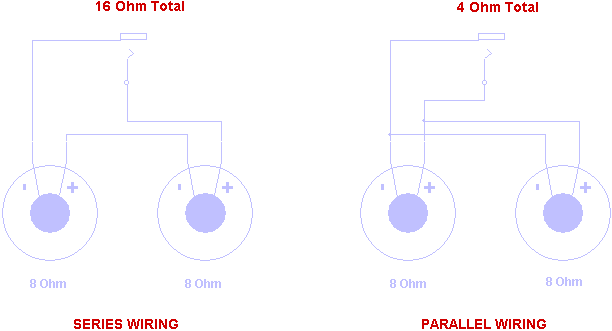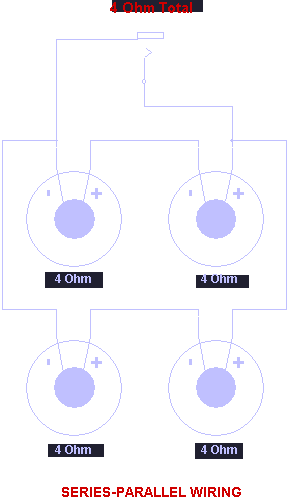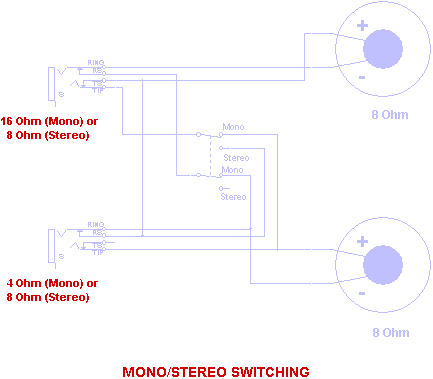|
Most speakers have an electrical impedance of either 4, 8 or 16 ohms (Ω).
To push more air, several speakers (always of equal impedance) can be
wired together in a cabinet.
The cabinet's electrical impedance depends on how the speakers
are wired together and may differ from the
impedance of the individual speakers.
Wiring diagrams
and their effect on cabinet impedance are displayed below.
An amplifier works best when it drives a load that matches its own output impedance. If the
impedances don't match, there could be
consequences:
-
If the speaker impedance is higher than the amp's, the amp might sound weak or dull.
-
If the speaker impedance is lower than the amp's, the amp might sound fantastic but
eventually burn out.
An amp's speaker jacks are
often marked with the minimum ohms you should connect (4 Ω for example).
Speakers and speaker cabinets should be marked with their ohms value.
If not, you can use a multi-meter to measure it.
NOTE: Multi-meters measure DC resistance, not AC impedance, but the two values
correlate. AC impedance is somewhat higher than DC resistance, so round up
your multi-meter reading to an even
4, 8, or 16 ohms.
Some amps have an impedance selector switch on the rear panel that you
can use to match its
output impedance to various cabinet impedances. Changing cabinet impedance is one of the easiest and most dramatic ways to change the
character of a guitar amp.
WARNING: If your amp has output tubes, be sure to connect
speakers whenever the amp is On ‒ otherwise its output transformer
can easily be damaged, especially if you're playing through it.
|




